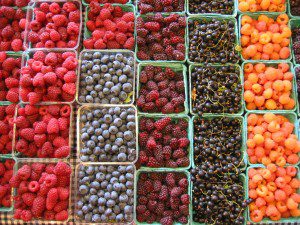Contributing Writer for Wake Up World
Fortification with vitamin C is one of the most effective and potent methods for dodging illness. And yet, this well-known nutrient is often overlooked as an outstanding anti-aging, cancer-destroying, disease-busting and mood-boosting addition to the diet.
To encourage health throughout the winter and beyond, consuming foods which naturally supply high levels of vitamin C is a smart move.
Glow with Health
Exceptional sources of vitamin C include hibiscus (Hibiscus sabdariffa L.), which is enjoyed as a tart tea, and rosehips (Rosa canina), which lends a floral flavor to infusions. And then there are two fruits that contain the highest levels of vitamin C documented – amla and camu camu. Amla is widely used in Ayurvedic medicine and “reported to possess radiomodulatory, chemomodulatory, chemopreventive effects, free radical scavenging, antioxidant, anti-inflammatory, antimutagenic and immunomodulatory activities,” notes a study at Muller Medical College in Kankanady, India. [1]
[pro_ad_display_adzone id=”110028″]
Equally impressive, if not more so, is camu camu. Jonathan Benson reports in “Eleven amazing facts and health benefits of camu camu” that “according to multiple sources, camu camu contains up to 56 times more vitamin C than a lemon, 60 times more vitamin C than an orange and 200 times more vitamin C than a banana on an ounce-by-ounce basis”. Camu camu is also anti-inflammatory, improves cognitive function and mood, fosters eye health, increases muscle tone and promotes healthy tendons, ligaments and collagen. Moreover, the berry substantially boosts immunity, which in turn, reduces bacterial and viral infections.
Likewise, have a look at the following list from the Global Healing Center which offers further examples of vitamin C-rich foods.
Vitamin C Rich Foods
- Acerola cherry
- Broccoli
- Citrus
- Black currant
- Guava
- Brussels sprouts
- Melons
- Cauliflower
- Tomatoes
- Strawberries
- Red and yellow bell peppers
- Herbs (cilantro, chives, thyme, basil and parsley)
- Leafy greens (especially kale, mustard greens, watercress, chard and spinach)
For highest nutritional benefit, always consume organically grown produce and only cook lightly to retain delicate nutrients. Better yet, enjoy fruits and vegetables raw. For herbal teas, try a cold-infusion.
Nobel Laureate Endorses Vitamin C
If you need further incentive to consume edibles abundant in vitamin C, one of the foremost scientists of our time heartily recommended vitamin C for health. Dr. Pauling, a chemist and winner of the Nobel Prize for chemistry (1954) and for peace (1962), became intrigued with the role that vitamin C played in the prevention and treatment of disease. Through years of extensive research and study, Dr. Pauling “became convinced of ascorbate’s [vitamin C] value in combating the flu, cancer, cardiovascular disease, infections, and degenerate problems in the aging process”, states the Linus Pauling Institute.
Learn more about Dr. Pauling’s work with vitamin C here.
Sources:
1. “Amla (Emblica officinalis Gaertn), a wonder berry in the treatment and prevention of cancer” Baliga MS, Dsouza JJ. Eur J Cancer Prev. 2011 May;20(3):225-39. doi: 10.1097/CEJ.0b013e32834473f4. Retrieved on November 27, 2013, from: http://www.ncbi.nlm.nih.gov
http://www.globalhealingcenter.com
http://science.naturalnews.com
http://science.naturalnews.com
Previous articles by Carolanne:
- Common Toxin in Your Pantry Causes Obesity, Diabetes, Infertility… and Much More
- Hemp – The Ultimate Cash Crop, Health Food and Environmental Savior Rolled Into One
-
Europe Embraces Healthy Raw Dairy by Unveiling Fresh Milk Vending Machines
- Confirmed by Science: You Really Can Change Your DNA – Here’s How
-
Chemtrails: Learn How to Protect Yourself From These Treacherous Poisons
- Top 10 Food Frauds: Formaldehyde, Plastic, Melamine & Caustic Soda Found in Common Foods
- Autistic Boy With Higher IQ Than Einstein Discovers Gift After Removal From State-Run Therapy
-
Enhance Spiritual, Mental and Physical Well-being with a Pineal Gland Detox
- Enterprising Community Aims for Total Food Self-Sufficiency with Free Edible Landscapes
[pro_ad_display_adzone id=”110025″]
Please note: this article was first published on Natural News.
[pro_ad_display_adzone id=”110027″]







